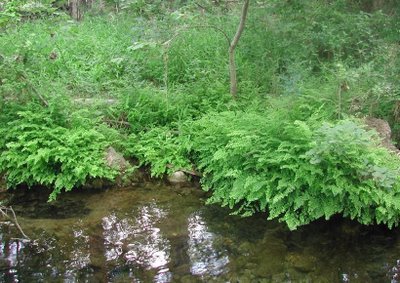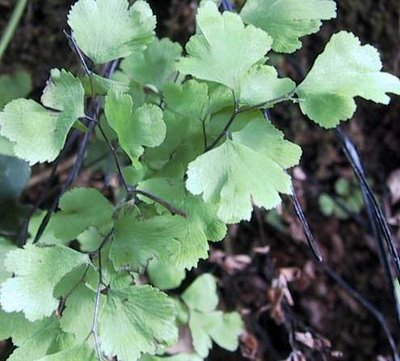
A plant of great delicacy, maidenhair fern has a thin, polished, black main leafstalk and fanlike leaflets supported by stalks as fine as hair. The plant has a gossamer look that makes it in demand for dried flower arrangements. Maidenhair fern prefers a wet environment, usually growing in limestone soils dampened by waterfall spray. Water runs off its foliage with the result that, even after being immersed in water, it emerges with dry leaves-hence its scientific name, Adiantum, meaning "unwetted." The fern's association with hair gave rise to an old belief that drinking a tea made from the plant could keep hair from falling out.

Maidenhair fern contains flavonoids (including rutin and isoquercitin), terpenoids (including adiantone), a tannin and mucilage.
A tea from the fresh plant has been used as an expectorant in treating coughs since the time of the ancient Greeks. Later herbalists prescribed maidenhair fern for more serious respiratory conditions, such as pleurisy, but with less success, for it is not a potent plant. Maidenhair fern was also employed to promote menstruation and as a mild diuretic.
A relative is the northern maidenhair (A. pedatum), which has a somewhat forked stalk, as opposed to the single stalk of A. capillusveneris, also called southern maidenhair fern.

Aerial parts are used by Western herbalists to treat coughs, bronchitis, excess mucus, sore throat and chronic nasal congestion, maidenhair fern also has a longstanding reputation as a remedy for conditions of the hair and scalp.

No comments:
Post a Comment